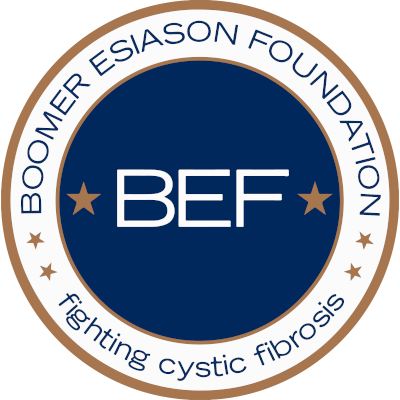Source: NY Road Runners
It would hit 90 degrees in Central Park before the day was done, but Jerry Cahill was out there running on +Tuesday morning.
“I wanted to get the loop in one more time before the race,” he explained.
“The loop” would be 10 kilometers (6.2 miles). “The race” would be Boomer’s Cystic Fibrosis Run to Breathe, a 10K on that same rolling lap around the park beginning at 9:00 a.m. Saturday.
The stunner would be that for most of his 56 years, Cahill has lived with cystic fibrosis, an incurable genetic disease that causes a buildup of mucus in the body’s organs, especially the lungs, with a median age of survival of 37 years. Three months ago, on April 18, Cahill underwent a double lung transplant. On +Saturday morning, he will be on the starting line of the second-annual race.
“It’s a gift of life,” said Cahill, a volunteer who manages the Boomer Esiason Foundation’s scholarship and transplant grant programs and founded the Team Boomer—Fighting Cystic Fibrosis athletic program, which encourages people with the disease to exercise. “There’s not a day that goes by that I don’t thank and appreciate the donor.”
The Boomer Esiason Foundation (BEF) was created by the NFL MVP quarterback in 1993 when his 2-year-old son, Gunnar, was diagnosed with the disease. It has since raised tens of millions of dollars for both research and support of those living with CF. Esiason, now a broadcaster, is again expected at +Saturday’s race.
Cahill was at the inaugural event last year as well—running with an oxygen tank.
Diagnosed when he was 11 years old, the Brooklyn youngster was encouraged to play sports by his parents—who were told that their son would be lucky to see his 18th birthday—primarily so that he and his brothers could spend as much of his limited time together as possible. Exercise for CF wasn’t advocated back then, Cahill said, and they didn’t realize that it would also help keep him healthy for many years. An athlete in both high school and at the University of Connecticut, Cahill has twice run the New York City Marathon, in 1991 and 1993, and competed in the pole vault up until last summer. As recently as 2010, he finished fourth in his age group at the USA Indoor Masters Track and Field Championships, and his personal best in the discipline is 16 feet, 4 inches.
Just as running kept Cahill’s lungs clear of mucus, the weight lifting he did as part of pole-vault training built up the strength in his chest cavity. “It was a double positive result,” he said.
“Growing up with my father, there was always this mantra, ‘you cannot fail. Don’t worry about it, you’ll be fine.’ It was a belief system I had that, no matter what the doctors were saying, that I was going to beat it. I’m not going to fail. I never looked at myself as having CF; I looked at myself as a competitive athlete, and I was.”
Cahill had a successful career in the apparel industry, rising to become a vice president for sales at Joseph Abboud. But about seven years ago, when frequent illnesses forced him to retire on disability, he began to volunteer at the BEF (where his latest campaign is appropriately called “You Cannot Fail: You Are the Hero of Your Own Story”). In February 2011, as his health deteriorated, Cahill became an active candidate for a transplant, but he was almost relieved when the first opportunity to receive new lungs fell through; at the time, he was the pole vault coach at Iona Prep in New Rochelle, NY, and was in the midst of coaching a good team that included Greg Gallagher, who would go on to win the national indoor championships in the emerging elite division that spring.
“Mentally, I didn’t think I was that sick,” he said, “but physically, I was.” His lung function had dropped to 23 percent.
Not long after the transplant, at New York Presbyterian/Columbia University Medical Center, Cahill’s surgeon, Dr. Joshua Sonett, sent him an e-mail: “By the way, I’m running Boomer’s Run to Breathe. I hope you’re running it.” At first, Cahill said, he was shocked, but soon he decided that it would be the perfect way to celebrate what he calls “the most humbling experience I have ever had”: the gift of life from his donor, a 37-year-old man from the South.
Sonett, surgical director of the lung transplant program at the hospital, credits Cahill’s swift recovery to his long-term commitment to exercise. “I really believe he is running [already] and recovering so quickly because of his work rather than our work,” said the surgeon in an e-mail.
With his lung function at 91 percent, Cahill is looking forward to the Run to Breathe, but looking beyond it as well, to another goal.
“The multi events at the Transplant Games [of America] in 2013,” he said. “I definitely want to get back to pole vaulting.”
Link to original article: http://www.nyrr.org/media-room/nyrr-news-service/jerry-cahill
